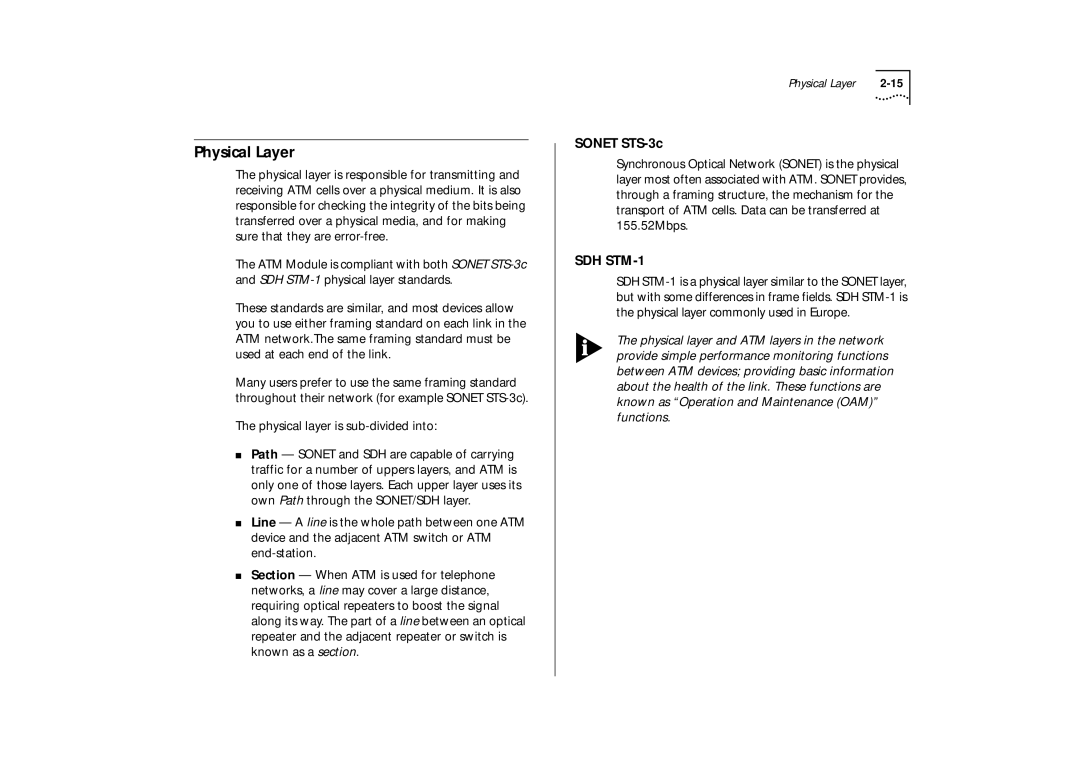
Physical Layer
The physical layer is responsible for transmitting and receiving ATM cells over a physical medium. It is also responsible for checking the integrity of the bits being transferred over a physical media, and for making sure that they are
The ATM Module is compliant with both SONET
These standards are similar, and most devices allow you to use either framing standard on each link in the ATM network.The same framing standard must be used at each end of the link.
Many users prefer to use the same framing standard throughout their network (for example SONET
The physical layer is
■Path — SONET and SDH are capable of carrying traffic for a number of uppers layers, and ATM is only one of those layers. Each upper layer uses its own Path through the SONET/SDH layer.
■Line — A line is the whole path between one ATM device and the adjacent ATM switch or ATM
■Section — When ATM is used for telephone networks, a line may cover a large distance, requiring optical repeaters to boost the signal along its way. The part of a line between an optical repeater and the adjacent repeater or switch is known as a section.
Physical Layer |
SONET STS-3c
Synchronous Optical Network (SONET) is the physical layer most often associated with ATM. SONET provides, through a framing structure, the mechanism for the transport of ATM cells. Data can be transferred at 155.52Mbps.
SDH STM-1
SDH
The physical layer and ATM layers in the network provide simple performance monitoring functions between ATM devices; providing basic information about the health of the link. These functions are known as “Operation and Maintenance (OAM)” functions.
